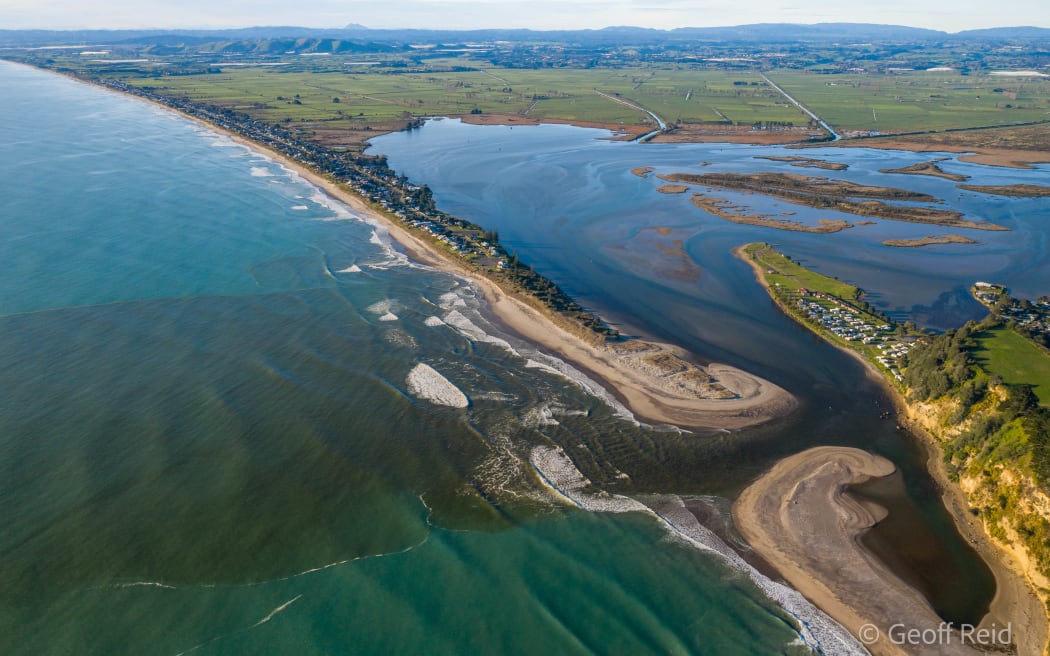
The Waihi Estuary is one of the most polluted estuaries in New Zealand. Photo: Supplied
Farmers in Coastal Bay of Plenty have been working to help restore health to one of New Zealand's most polluted estuaries.
Since February 2021 farmers and orchardists have planted 210 hectares of erosion-prone land with native and exotic trees and reducing nutrient and sediment loads.
The project was driven by local catchment group Wai Kokopū, led by Dr Alison Dewes.
She says the effort is resulting in a reduction of 1.6 tonnes of phosphorous and 10 tonnes of nitrogen annually leaching into local waterways which then flow into the Waihi Estuary.
Nestled between Maketū and Pukehina, the Waihi Estuary was once a main food bowl for the area. But for years native birds, plants and fish have struggled to survive.
For at least a decade, shellfish has not been safe for human consumption due to high levels of nitrogen, phosphorous and E. coli, Dewes says.
The estuary drains a hydrological area of 34,000 hectares with the catchment starting at Lake Rotoiti and Rotoehu in the Rotorua district.
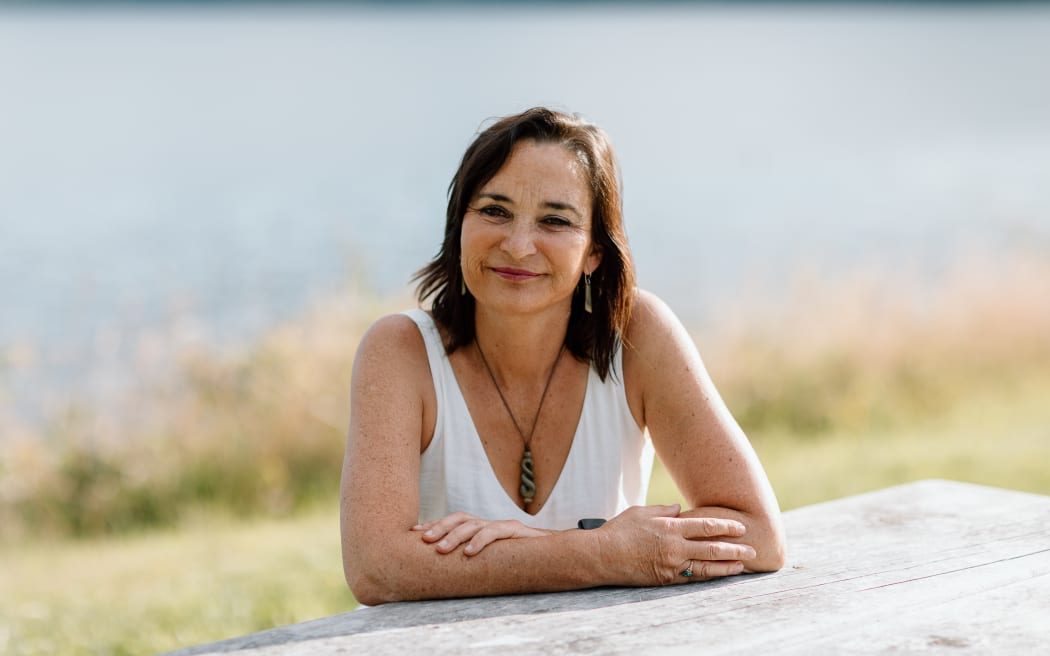
Wai Kōkopu project lead Dr Alison Dewes. Photo: Supplied
Dewes says intensive land use in the area is primarily responsible for the state of the estuary's health.
"We've got the dairy farms, 11,000 to 13,000 hectares of dairy farms and about 2000 hectares of horticulture which is pretty intensive as well."
Dewes says data from the Bay of Plenty Regional Council indicates E. coli loads need to reduce about five times, nitrate loads need to be reduced by 70 per cent and phosphorous by 30 per cent.
"This will take a couple of generations to fix. We've just got to accept that. And we probably need a reasonable amount of land use change to improve things as well."
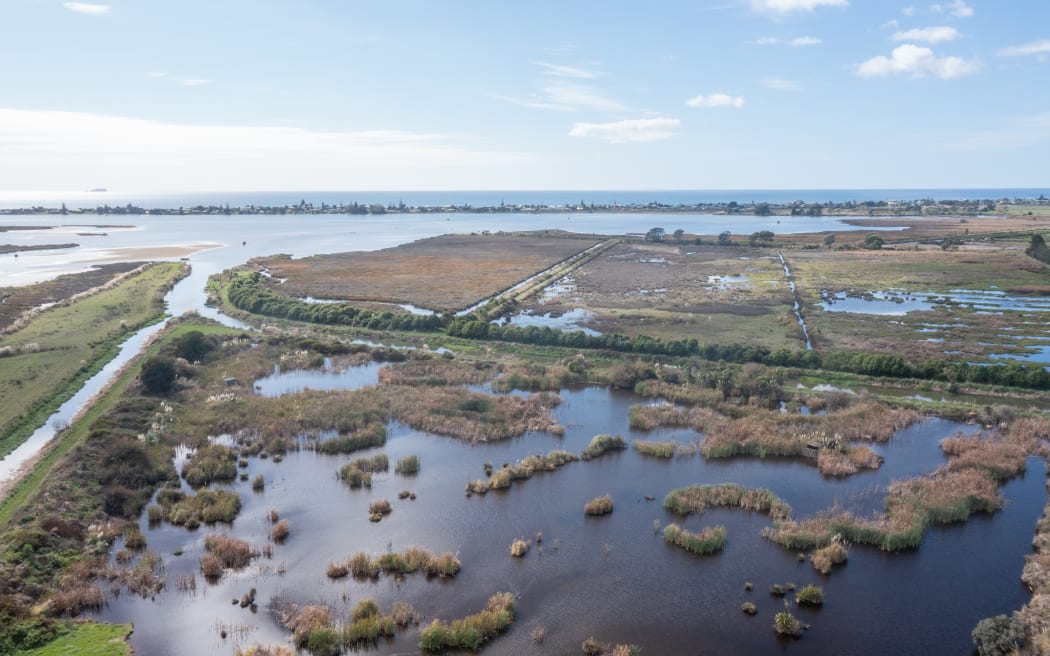
Alison Dewes believes the land surrounding the estuary should be restored to the wetland it once was. Photo: Supplied
The Lighthouse Farm project run by Wai Kokopū was funded by Jobs for Nature and received $1.45million over the past three years.
It involved working closely with 15 Lighthouse Farmers to help them transition to systems with a lower environmental footprint and supported over 40 farmers and orchardists surrounding the Waihi Estuary to better understand their landscapes, emissions and contaminant losses.
"If we really did a budget to [have] everything remediated in here and probably the lower 3000 hectares to be reverted back to a wetland, it was more to the tune of $60million, and we're really looking at $3million to just work with farmers and the plant some of the vulnerable areas in the catchment."
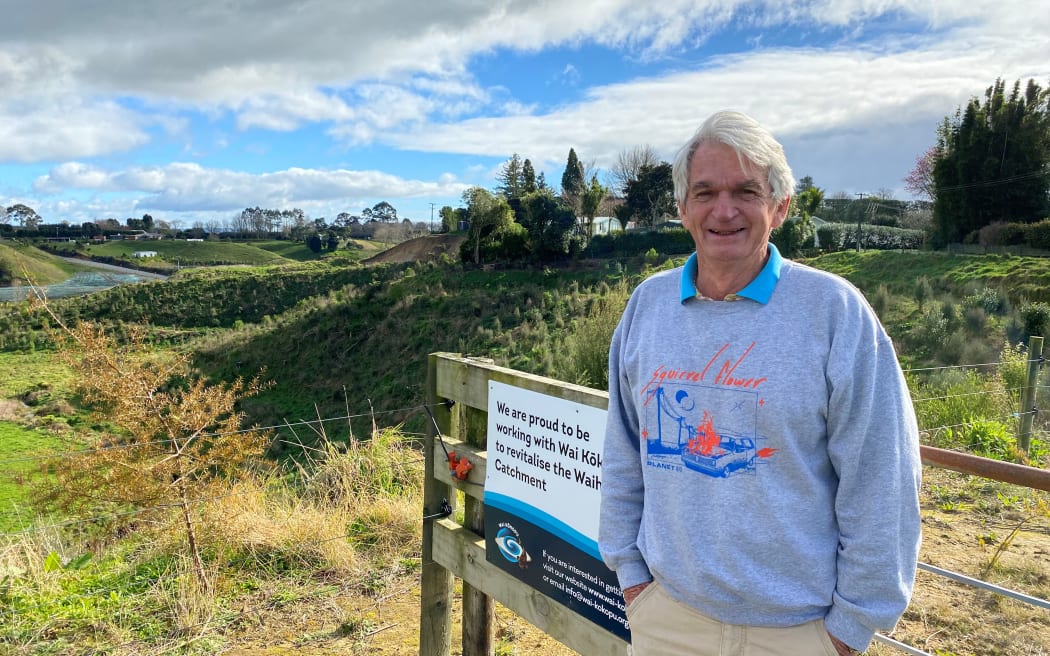
Farmer Paul Hickson. Photo: RNZ/Leah Tebbutt
Paul Hickson farms in Pongakawa with a mix of dairy operations and horticulture.
He is one of Wai Kokopū's Lighthouse farmers and has planted steep land on farm, planted his waterways and also created a wetland which is monitored by NIWA.
"We used to have a bach in Pukehina and when you can't collect shellfish, when tangata whenua cannot collect shellfish, it's quite terrible," Hickson says.
"The stream that runs from our farm had a lot of E.Coli, and that all runs down into the Waihi Estuary.
"Trying to improve the environmental damage from overuse of fertiliser and transitioning to different systems of less intensive dairy farming, I think it's all been very good and I've learned a lot."
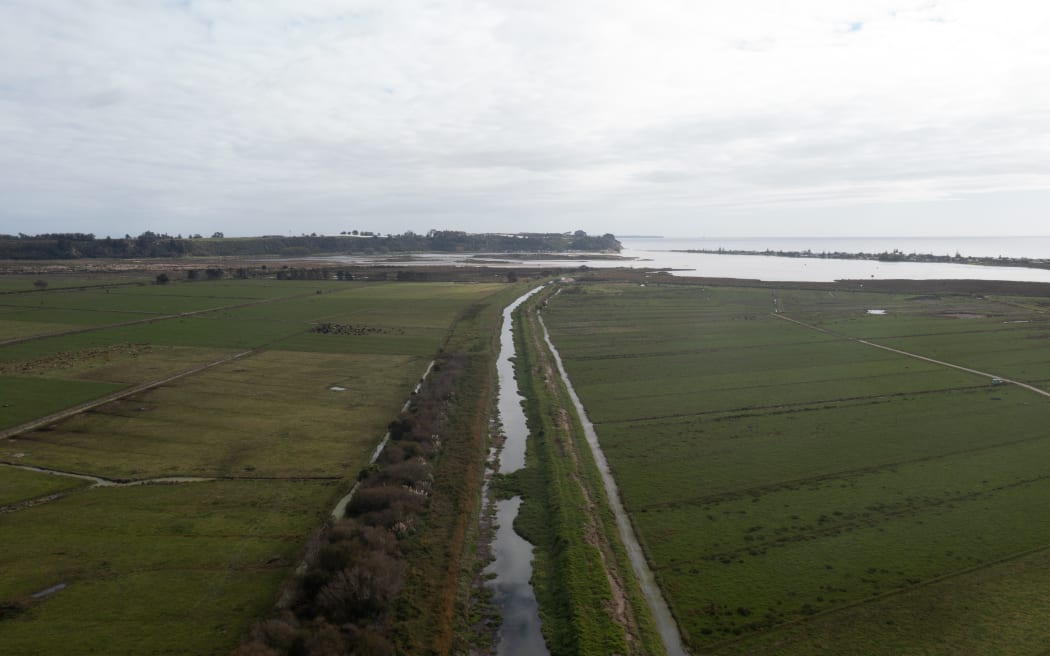
The estuary is fed by three rivers in the catchment which starts in the Rotorua Lakes area. Photo: Supplied
One of the problems Hickson predicted moving forward was the financial impact on farmers with higher interest rates and lower dairy returns.
"In terms of major planting, you want to make hay while the sun shines. We're actually doing things that are good for the environment. But it's also going to have a positive economic impact."
Hickson believed farmers needed to embrace change.
"What we're doing and what a lot of farmers are doing is wonderful for farming and the country. When I look at what the lighthouse farmers are doing in this area, it's a very good role model for every other farming area in New Zealand and I wish the city people would learn more about what we're doing and what we've done, because we're great.
"And we might drive a diesel track and on that diesel track with often 400 plants sitting there that we're going to plant that morning with my grandchildren. So we can't have everything, we've got to balance."
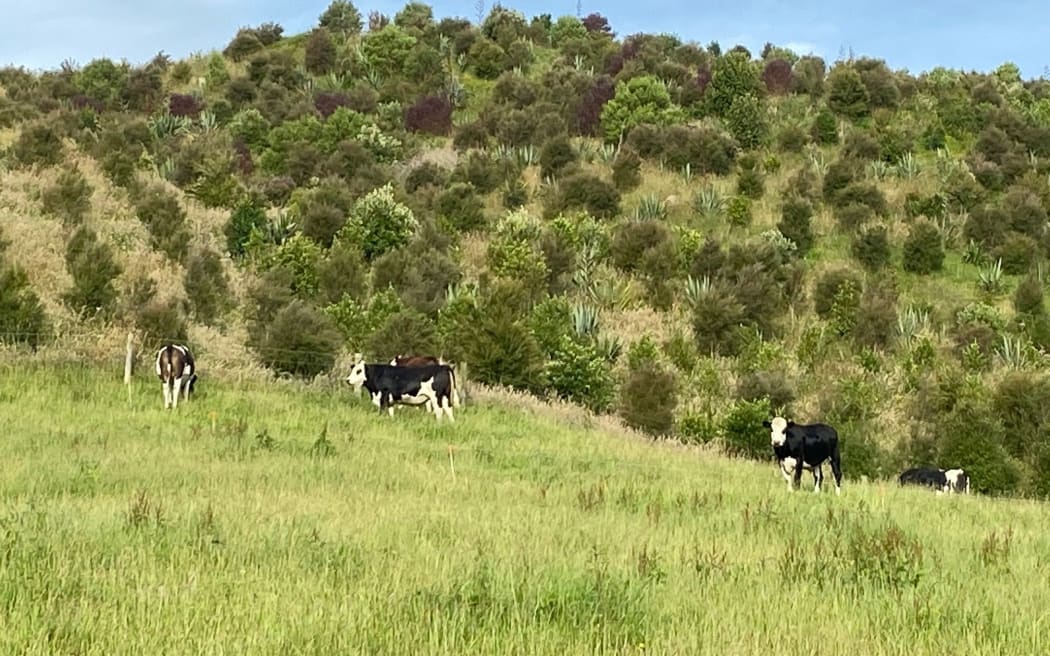
Retired steep hillside on a farm in the catchment. Photo: Supplied
Bay of Plenty Regional Council coastal catchment manager Pim de Monchy told Country Life Waihi and Maketū estuary, to the west, are the two most degraded estuaries in the region.
"They need substantial changes from the status quo in order to be restored to at least a moderately healthy state. It's the intensity of the land use. That's what leads to the degradation of the estuary."
De Monchy says the council acquired a farm closest to the estuary and is restoring 30 hectares of the land to a wetland.
He says the council is working with iwi to design the wetland which would be broken into thirds. One being a treatment wetland and the remaining area a natural coastal wetland for cultural and biodiversity purposes.
"It's definitely big enough to make an impact for the 471 hectares of land that feeds into that 30 hectares."
De Monchy says recommendations from Niwa state catchments need to set aside two to five per cent of the area for treatment wetlands in order to reduce contaminant loads by up to about half.
"But obviously, it's not big enough to treat the water from the 35,000-hectare catchment. A number of other initiatives are needed as well."
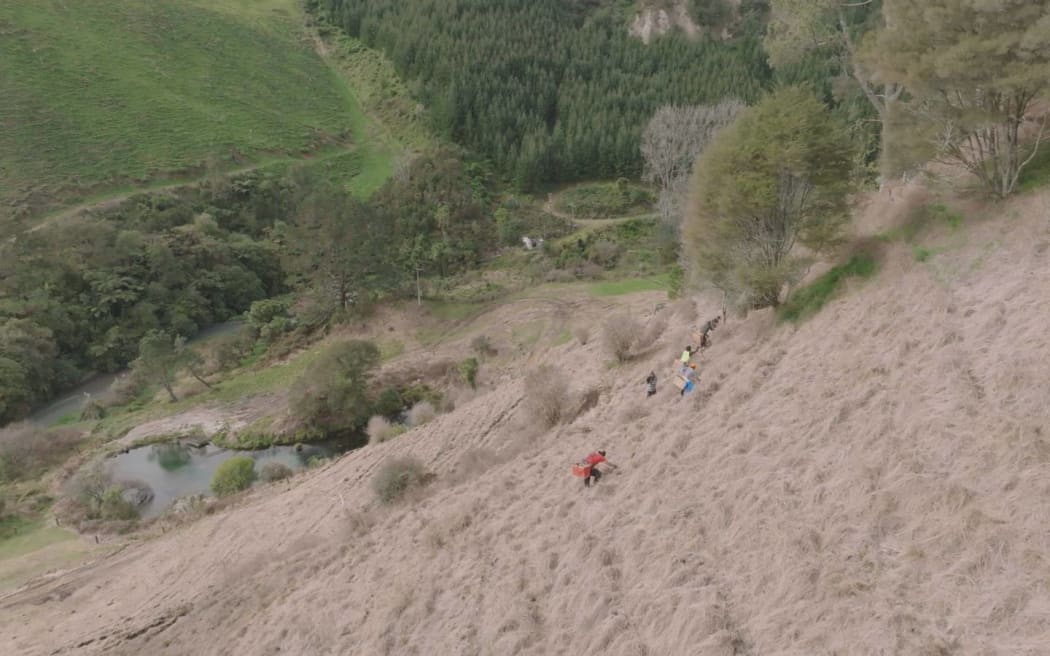
210 hectares of marginal erosion-prone land has now been retired from grazing and replanted in native and exotic trees. Photo: Supplied
For Dewes, she would like to see an independent group established to find alternative means for the land, showing a way for farmers to transition out of the high-intensity land use.
"And it might be that yes we do have to grow fibre, we can do aquaculture around here. Maybe we need a little seaweed farm. I understand there's a white bait farm that's just started on the bottom of the South Island.
"We need to be giving farmers a way to transition from what they have been doing for 50 or 100 years to say, yes, the world's changed, yes, the lands changing and yes, we do need a food system that's appropriate for the well being of all and what does that look like."
Wai Kōkopu will receive financial support from BayTrust and TECT for another 12 months to continue working with landowners to reduce nutrient and sediment loads, as well as fish passage remediation, water quality monitoring, weed and pest management, climate change resilience, and supporting nature-based education.
"This project has had a short run time to date, and long-term change takes time," Dewes says.
"So Wai Kōkopu hopes to raise more funding to keep the momentum up beyond 2024."


